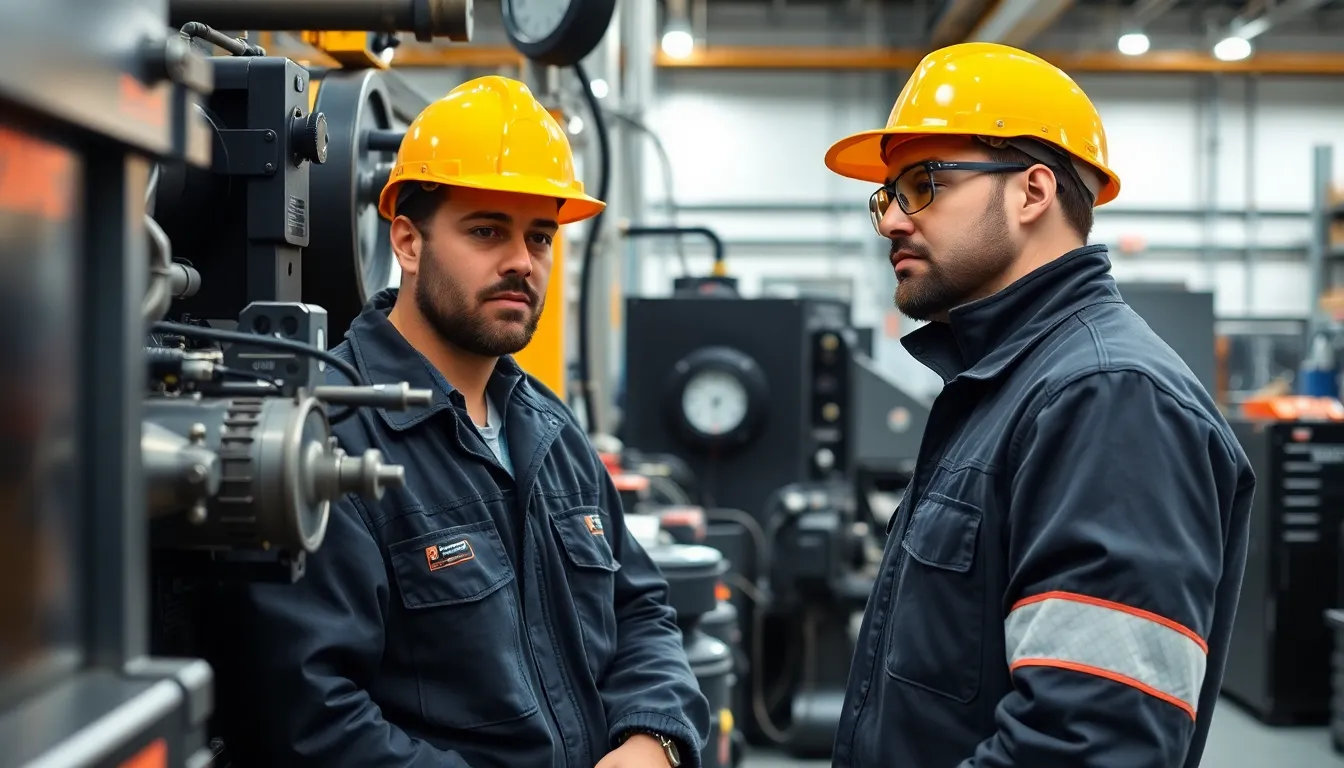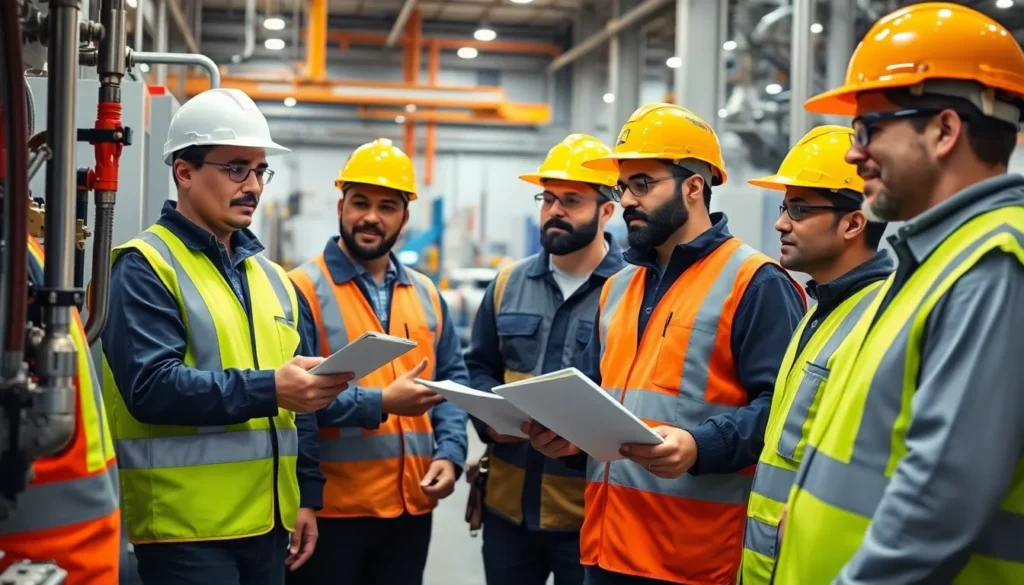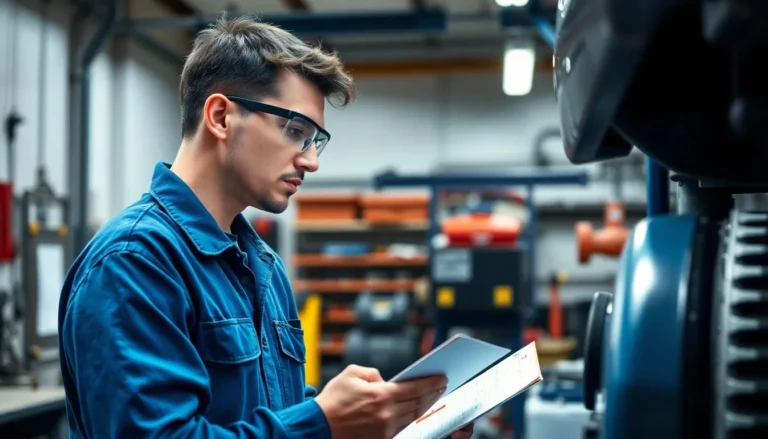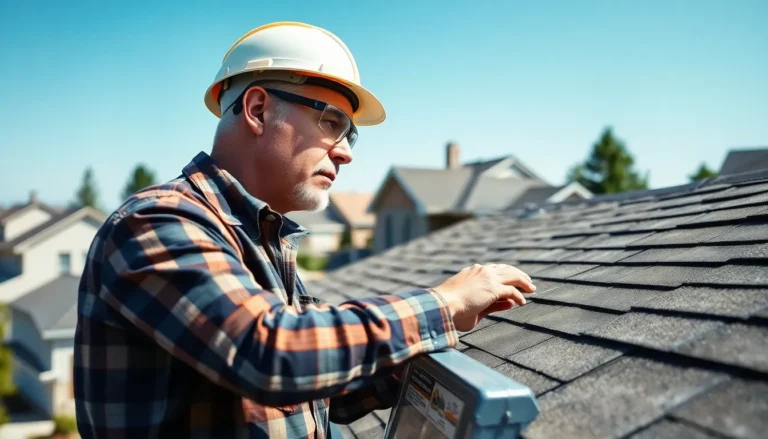In the world of facility management, preventive maintenance is the unsung hero—like the sidekick that saves the day while wearing a cape made of spreadsheets. It’s that magical practice that keeps equipment humming and buildings standing tall, all while saving time and money. Imagine a world where unexpected breakdowns and costly repairs are a thing of the past. Sounds dreamy, right?
Table of Contents
ToggleUnderstanding Facility Preventive Maintenance
Facility preventive maintenance ensures optimal performance of equipment and preserves the integrity of buildings. This proactive approach minimizes risks associated with unexpected failures and extends the lifespan of assets.
Definition and Importance
Preventive maintenance refers to regular, scheduled maintenance activities designed to prevent equipment failure and maintain building functionality. It plays a vital role in facility management by identifying potential issues before they escalate into costly repairs. Implementing a preventive maintenance program reduces downtime and enhances operational efficiency. With maintenance tasks performed routinely, facility managers can improve safety standards and ensure compliance with regulations.
Key Components of Preventive Maintenance
A successful preventive maintenance program consists of several key components. Developing a schedule for maintenance tasks, establishing clear protocols, and utilizing checklists are essential. Training staff ensures familiarity with equipment and procedures. Documentation of maintenance activities provides a comprehensive record for future reference. Effective communication among team members fosters collaboration and enhances the program’s success. The use of technology, such as computerized maintenance management systems (CMMS), streamlines task management and improves tracking capabilities.
Benefits of Facility Preventive Maintenance

Facility preventive maintenance provides numerous advantages that enhance operational efficiency and cost-effectiveness. Prioritizing this practice leads to significant improvements in various aspects of facility management.
Cost Savings
Reduced expenses characterize the primary benefit of preventive maintenance. By addressing issues before they escalate into major failures, facilities avoid costly repairs and unplanned downtime. Research shows that companies can save up to 30% on overall maintenance costs through a preventive approach. Organizations can allocate resources more efficiently when maintenance is predictable. Moreover, budget forecasting becomes simpler with a structured maintenance schedule. Long-term investments in preventive maintenance significantly decrease total operational costs by extending the life of equipment.
Increased Equipment Lifespan
Extended equipment longevity results from consistent preventive maintenance. Regular inspections and servicing keep machinery operating at optimal levels. With proper upkeep, assets can function effectively for years beyond their expected lifespan. Studies indicate that facilities practicing preventive maintenance experience a 20% increase in equipment lifespan on average. Asset reliability improves with reduced wear and tear. Additionally, maintaining critical equipment enhances safety and supports compliance with regulations. Investing in preventive measures ultimately safeguards equipment and strengthens overall facility operations.
Implementing a Preventive Maintenance Program
Establishing a preventive maintenance program significantly enhances facility management. A structured approach ensures that equipment runs smoothly and reduces downtime.
Steps to Develop a Program
First, define clear goals for the maintenance program. Identifying which equipment needs attention helps prioritize maintenance activities. Next, create a detailed maintenance schedule. Scheduling tasks at regular intervals aids in consistent oversight. Utilizing checklists ensures that no important steps are missed during maintenance activities. Training staff members on procedures strengthens their ability to identify issues early. Documenting all maintenance actions allows for easy tracking and analysis of effectiveness. Lastly, continuous evaluation of the program helps identify areas for improvement.
Tools and Technologies for Effective Maintenance
Employing advanced tools increases the efficiency of maintenance practices. Computerized maintenance management systems (CMMS) streamline task management and enhance tracking. These systems provide real-time data on equipment performance and maintenance frequencies. Mobile applications facilitate communication among team members and enable quick reporting of maintenance issues. Predictive analytics tools analyze data trends, helping to foresee potential failures before they occur. Utilizing these technologies not only simplifies the preventive maintenance process but also supports informed decision-making for facility managers.
Best Practices for Facility Preventive Maintenance
Implementing best practices ensures effective facility preventive maintenance. Facility managers benefit significantly from structured approaches.
Regular Inspections and Audits
Regular inspections and audits play a critical role in facility preventive maintenance. Scheduled assessments help identify potential issues before they lead to failures. A good frequency for inspections is monthly, which allows for timely intervention. Data suggests facilities that conduct routine audits experience up to a 30% reduction in unexpected breakdowns. Documentation from these inspections guides maintenance actions, ensuring thorough records exist for future reference. Tools like checklists enhance the inspection process by standardizing procedures, facilitating consistent evaluations. Engaging staff during these audits creates a culture of proactive maintenance, fostering accountability across teams.
Staff Training and Involvement
Staff training fosters a proactive maintenance culture within facilities. When employees understand the significance of preventive maintenance, they become more engaged in the process. Regular training sessions focus on equipment operation, safety standards, and maintenance protocols. Data indicates facilities with well-trained staff see a 25% increase in equipment reliability. Staff involvement also leads to better communication about emerging issues, enabling quicker responses. Encouraging team members to contribute ideas enhances their commitment to the program’s success. Involvement promotes ownership, leading to consistent adherence to maintenance schedules.
Implementing a robust facility preventive maintenance program is essential for any organization aiming to enhance operational efficiency and reduce costs. By prioritizing regular inspections and proactive measures, facility managers can significantly extend the lifespan of their assets while minimizing unexpected breakdowns. The integration of advanced technologies like CMMS further streamlines maintenance tasks and ensures informed decision-making.
A commitment to preventive maintenance not only safeguards equipment but also fosters a culture of reliability and accountability among staff. As organizations recognize the long-term benefits of these practices, they position themselves for sustained success in facility management. Prioritizing preventive maintenance is more than a best practice; it’s a strategic investment in the future of the facility.










